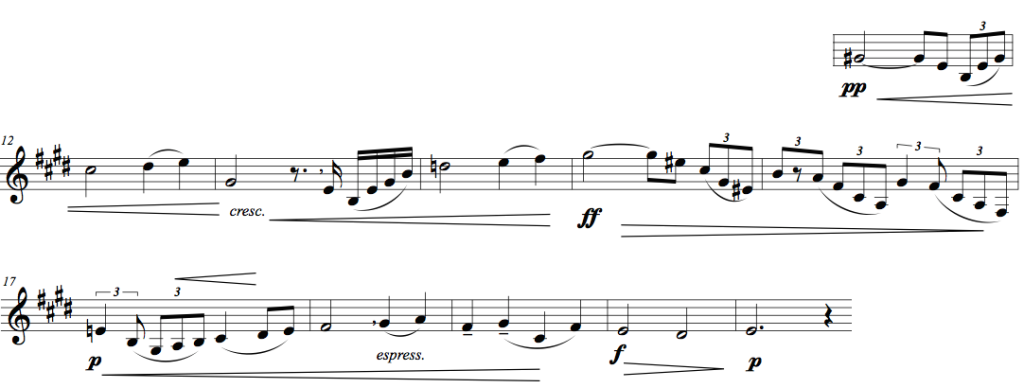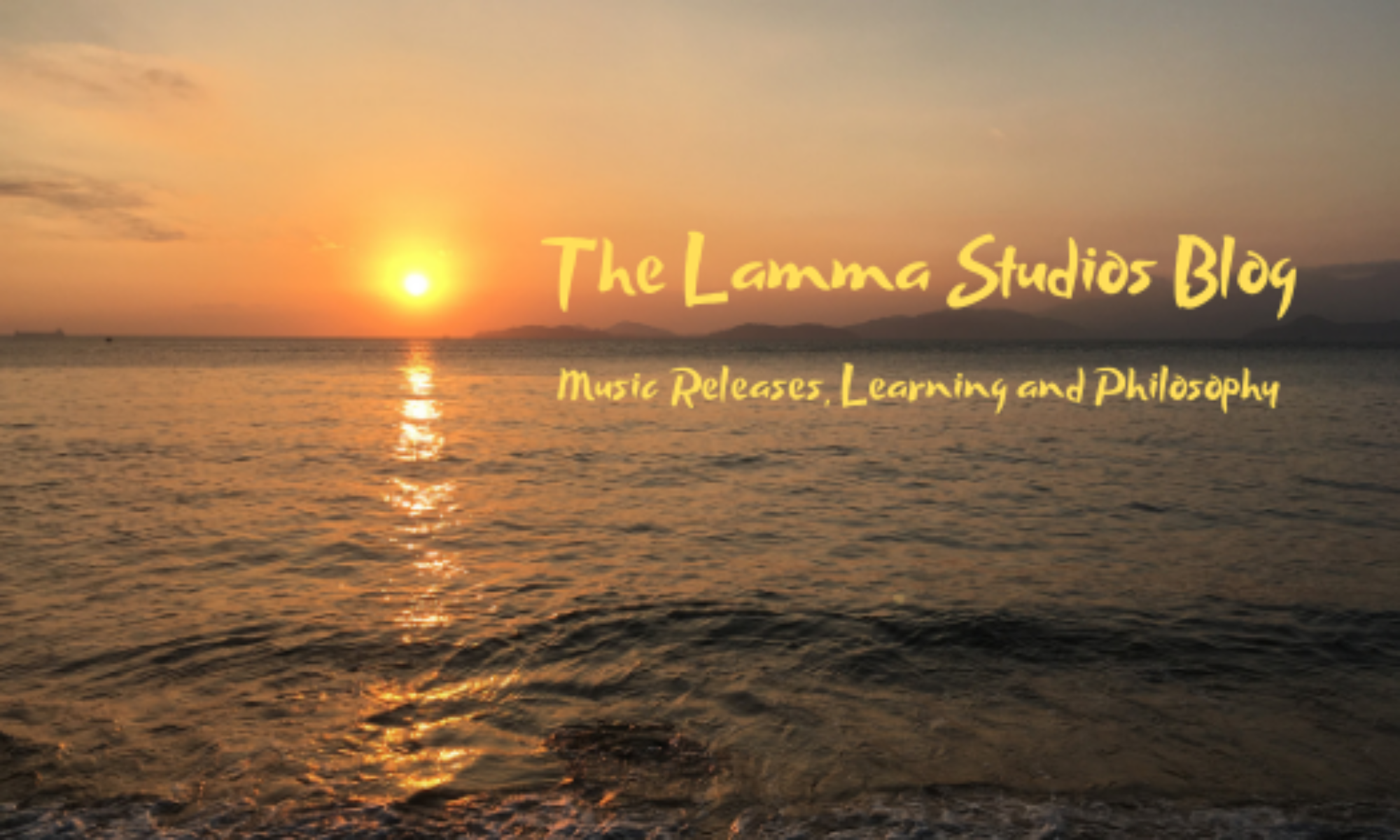Lamma Studios is delighted to announce the release of trumpeter Joshua MacCluer’s album Elevation.
What follows was written on Joshua’s website at the time of release.
Elevation is the result of almost two years of work and was a tremendous learning experience for me as well a very enjoyable artistic process.
The album is now released electronically and if you’d like to download the album or a track please visit CD Baby, iTunes or your favorite online music retailer.

I made this album without the expectation of making money or being famous; those are not things that happen as a result of making a self-produced solo classical trumpet album. However the musical benefits have been so vast and I consider this one of the best projects of my career.
I suggest that all performers will benefit from recording projects, audio, video or otherwise. The growth that is an integral part of the practicing, recording, and editing process is powerful and the benefits are wide ranging. I’d like to share some thoughts I have on recording, focusing today on the myriad benefits of musicians recording audio, using myself as a testimonial.
I improved in so many ways as a result of this project, which comprised work over almost two years. Making this album involved selecting and studying and practicing repertoire, playing recitals, playing recording sessions, editing, mixing, and other jobs. Since I self-produced the album there was a large skill set required and the challenges and benefits the project provided were wide ranging and often surprising.
These challenges and benefits included:
1) Technique: My technique out of necessity developed past old limits in the process of figuring out how to play a lot of this repertoire. Solo repertoire is much more challenging technically than orchestra music and I had quite a bit of technical catch-up to do after being an orchestral player for 15 years. A nice benefit of developing this technique is that now my job at the Philharmonic feels a lot easier. There are very few orchestral trumpet parts approaching the technical difficulty of several of the works on this album.
2) Modeling: I did a lot of listening to and modeling of great musicians while preparing the repertoire. Modeling is a very effective and enjoyable learning tool and I am a much better artist having listened and attempted to emulate Rafael Mendez, Sarah Chang, Jascha Heifetz, Nat King Cole, Louis Armstrong, Matthia Goerne, Frank Sinatra, Clifford Brown, Elly Ameling, Ronald Romm, Joe Burgstaller, Brandon Ridenour and many others.
3) Mental Self-Modeling: One of the great unexpected benefits came from the improved mental models I developed of my own playing. Confession: when I recorded these tracks I often was not capable of playing at the consistently high level required of a studio recording. Therefore as is common procedure, I recorded section by section and made several takes of each section. I then edited them down to a best version, a sort of super version of reality. This process requires listening to the takes over and over (and over) again. The side effect of this listening helped me to update my mental self image to a player with higher consistency, stamina, expressive power, rhythm, pitch, and sound. That improved musical self image is now manifesting in my live playing with more and more regularity.
4) Content Review and Self-Evaluation: Nothing provides a more reliable technique for more honest self-evaluation for musicians than recording. Listening in the editing room I was made aware of many details in my playing that I had been unaware of. It was not always an enjoyable experience but it was very useful. I gained great benefit from having time in between recording sessions to listen back to the recordings, hear what I needed to improve the most, and practice accordingly. The difference between the quality of my playing from the first recordings to the last is a testament to how much I improved as an artist and player as a result.
5) Phrasing: In my opinion phrasing is close to a lost art in orchestral trumpet playing today. Through this project I began to explore the concept and have opened my ears to an element of music I was frankly almost blind to beforehand.
Much insight on phrasing can be gained from a visual inspection of recorded music. I came to an understanding of this during the editing process of Elevation. For an example let’s examine a passage from the first track, the Meditation from Thais:
Here is the sheet music with dynamics:

Here’s what it sounds like:
And this is what the waveform looks like:

Notice how we can follow phrasing and dynamics visually. With music software we can visually inspect a phrase. This has given me a much better understanding of dynamics in general also, and specifically in being able to recognize when a note is sticking out of a phrase or letting the phrase drop.
I found during editing that the passages with the best phrasing were easily recognizable by sight. The phrases with the most smooth uninterrupted waveforms tend to have the most smooth and coherent phrasing. Visually it is quite easy to see. Looking at the example from Thais today I see many visual clues of small problems that could be corrected for even more precise and musical phrasing. I suppose I will have to wait for the next album for that.
6) Audio Production: As my first studio classical album, Elevation proved to be a much different kind of project than my previous pop, jazz and electronic albums. Edits needed to be much better done and balance and sound needed to be very subtly addressed. My skills in sound recording, editing, mixing, and mastering all improved greatly. This is a very complicated and detailed process, and music production has helped me understand music so much better over the years for many reasons. The benefits of audio production on musicianship is a topic worth a separate blog post.
This all would not been possible without an enormous amount of help of countless friends, family, colleagues, and mentors. First of all I’d like to thank my mother, Barbara MacCluer. She generously and tirelessly supported my musical career every step of the way, sending me to summer festivals every year, buying me the instruments I needed, sending me to music school, and generally being my #1 fan. Thanks, Mom! Also I would like to thank my father Charles MacCluer and my stepfather Tom Kriete for their musical inspiration in the early years. Finally I would like to thank my late grandfather Theron McClure for his spiritual ancestry and over eighty years of musicianship that serves as an inspiration to this day.
Next I’d like to thank my colleagues and friends who gave themselves musically on this album. Illie Ng Ling Ling contributed beautiful playing and a very nice personality to many of these tracks. Bob Mocarsky appears on two tracks and has been a big positive influence on my jazz playing in Hong Kong. I thank him for helping me rekindle my love for playing jazz after many years. John Shum was my student at the Hong Kong Academy for the Performing Arts for two years and is also a fine pianist and I thank him for playing on three tracks as well as accompanying me on my first recital. Thanks to Aziz D.Barnard Luce for his playing on the djembe as well as his weekly brilliance while standing directly behind me at the Philharmonic. Thanks to Dipsy Ha for his work on arranging the Massenet. Finally I would like to thank my colleagues from the Hong Kong Brass Quintet. My colleague in the trumpet section Chris Moyse, is a wonderful colleague and a very classy player for whom I forsee great things. I thank Lin Jiang for his infectious excitement for music making and general awesomeness on the French horn. Paul Luxenberg continues to inspire me with his desire to be the best person and musician he can be and is a very positive influence. Finally I thank Jarod Vermette, who I sit next to at work daily, for his true love of music, powerful artistry and great teamwork.
Next I would like to thank Joe Kirtley and the Hong Kong Academy for the Performing Arts. Joe’s support of this project and his help in securing the availability of the Academy recital hall for recording was essential. This project would not have been possible without him.
Thanks also to Marie Bouveron, Vincent Ip and Amanda Chau for their help on the videos.
Thanks to Wilson Chau for taking the cover photo, Natalie Ma for doing the art, and to Iris Ting for doing many many things as my go-to assistant.
I would also like to thank some colleagues for their support of my musicianship over the years. William Day has for years been a sounding board for musical and personal ideas and my go-to critic for new ideas. Aaron McCalla has been a great colleague in and out of classical music and was a catalyst for my branching out into other styles of music. Joshua Gindele is a very old friend whose work in the Miro String Quartet first showed me the possibility of reaching for the true top artistic standard in the world. Marc Gelfo has been present for a large amount of my practicing of this material and I thank him for his numerous good ideas both musical and personal. Andrew Simon has been a big help to me in advising how to begin a solo career in Hong Kong. Finally, big thanks to my great colleagues at the Hong Kong Philharmonic for being a daily inspiration for me and for being such great teammates.
Finally I would like to thank some of my most important mentors for their example, encouragement, and instruction. William Lucas was my teacher in university and I would not be able to play anything without him. George Vosburgh taught me the orchestral style at a very reduced rate when I was a young professional. Andrew Balio has been my Obi Wan in many ways for years and helped greatly to shape my worldview. Thanks also to several other influential teachers, including John Dearth, Terry Detwiler, Vincent Tornello, Laura Thomas, Michael Sachs, Barbara Butler, and Stephen Burns. My boss from Saint Louis, David Robertson, spent seven years developing me and I thank him for his patience and the opportunities he gave me to grow, especially the super difficult modern music that he trusted me to play on his Pulitzer series. I would like to thank my maestro in Hong Kong, Jaap van Zweden, who brought me to Hong Kong and demands every day that I reach for higher and higher standards. Finally I would like to thank Susan Slaughter, who I sat next to in Saint Louis for seven years. Her shining example of artistry, professionalism, integrity, work ethic, and humanity set an extremely high standard. I pick up the instrument every day with the intention to continue the work we shared to the best of my ability.

